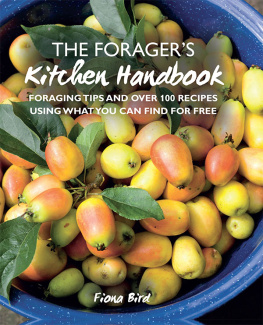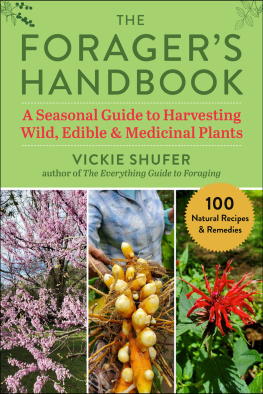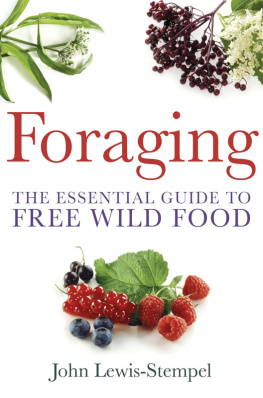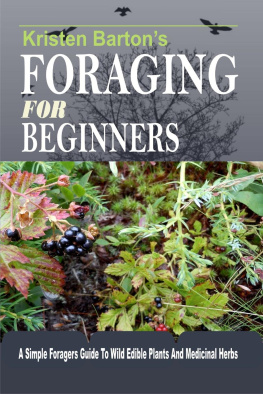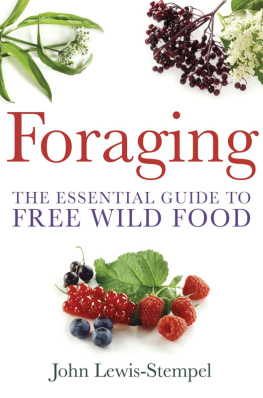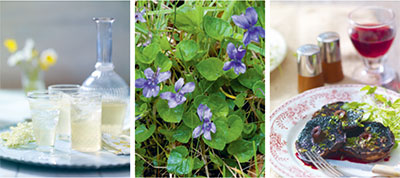
THE FORAGERS
Kitchen Handbook
THE FORAGERS
Kitchen Handbook
FORAGING TIPS AND OVER 100 RECIPES USING WHAT YOU CAN FIND FOR FREE
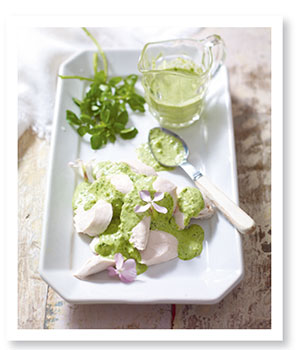
Fiona Bird

This book is for everyone who loves rainbows and strives to cook with ingredients that are both local and in season.
This edition published in 2021 by CICO Books
An imprint of Ryland Peters & Small Ltd
341 E 116th St, New York NY 10012
2021 Jockeys Fields, London WC1R 4BW
www.rylandpeters.com
10 9 8 7 6 5 4 3 2 1
First published in 2013 as The Foragers Kitchen
Text Fiona Bird 2013, 2021
Design and photography CICO Books 2013
The authors moral rights have been asserted. All rights reserved. No part of this publication may be reproduced, stored in a retrieval system, or transmitted in any form or by any means, electronic, mechanical, photocopying, or otherwise, without the prior permission of the publisher.
A CIP catalog record for this book is available from the Library of Congress and the British Library.
ISBN 978 1 78249 876 6
EISBN: 978-1-80065-043-5
Printed in China
Copy Editor: Lee Faber
Designer: Alison Fenton
Photography: Peter Moore (foraging photos), Stuart West (recipe photos), plus see for additional credits
Home Economist: Louise WagstaffeM
Food Stylist: Luis Peral Aranda
The author and publisher add a word of caution: Foraging wild ingredients requires expert knowledge and identification. They cannot be held responsible for, or shall not be liable for, the erroneous consumption of wild plants that have caused severe or allergic reactions resulting from misidentification. The photographs and text in this book should not be used alone for identification purposes.
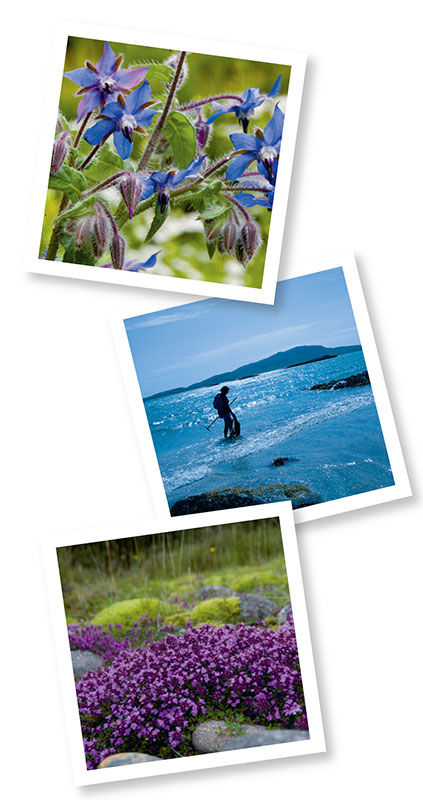
contents
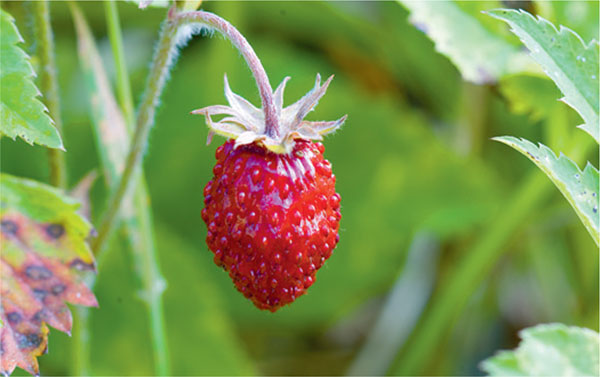
The foraging cook brings the tastes and scents of the countryside to the kitchen table, wherever that table may be. I divide my time between the stunning glens of rural Angus and the Outer Hebridean Isle of South Uist, where my husband is the island doctor. As a mother of six who enjoys foraging and cooking, my local food supplies vary from Angus hedgerow, moors, and woodland to Hebridean coast, machair (fertile, low-lying grassy plain found on the coastlines of northwest Ireland and Scotland), peatland, and lakeside. In season, there is an abundance of seaweed, bog myrtle, sweet cicely, and meadowsweet. I am a fortunate woman.
Foraging takes time, and Scottish weather is often mixed, but with some gently cajoled help from our family and friends, it has become a perfect recipe for outdoor teamwork. With luck and a bit of effort, supper can be off the land, in other words, free, not bought. I describe my foraging expeditions as capers, and yes, I collect prolific budded flowers too, but even a tenacious forager can return home with an empty basket. Favorite gathering spots may have been overpicked, or in some years a particular ingredients season is paltry. Even the most tenacious forager is accepting of a fruitless expedition. Take a lighthearted approach, and enjoy the foraging journey as much as the gathering experience. A little wayside nibbling or wild grazing en route home, is, of course, a foragers pleasure.
I have a great affection for rural Scotland, but foraging here may require a wetsuit and pair of not just thorn-proof, but fleeced-for-warmth, gloves. City dwellers may be able to forage with less exposure to the elements as our eldest son, Xander, our stalwart elderflower cordial maker, has found. Inspired by a pink elderflower bush in his grandmothers garden, he now hunts pink elderflowers on London wasteland. In elderflower season, Xander is synonymous with not only a very sticky kitchen, but also a tiny corner of a freezer tightly packed with bottles full of elderflower cordial. Kitchens may be cleaned throughout the year, but the elderflower season passes all too quickly. Seize the season before it, like the faded bloom or withered berry, has disappeared, leaving the tardy foraging cook with a long year of waiting. However, as the seasons move on, so the foraging family memories and knowledge pass down the generations, cementing longlasting family and food connections.
Many basic ingredients can be frozen, but to my mind this does little for the freshness or for the spirit of foraging, and encourages greed. Foraging is more about enjoying the moment than saving for a rainy day. Even so, I have noticed that when foraging, the berry or blossom a wee bit further away always looks more tempting. Indeed, the grass may be greener over the fence, or hedge, but try to be content with a basket of what is just enough for today. The foraging cook should be, by nature, a seasonal cook; the provenanceits place of originis guaranteed.

The urban forager can often be rewarded with a fine harvest of blackberries.
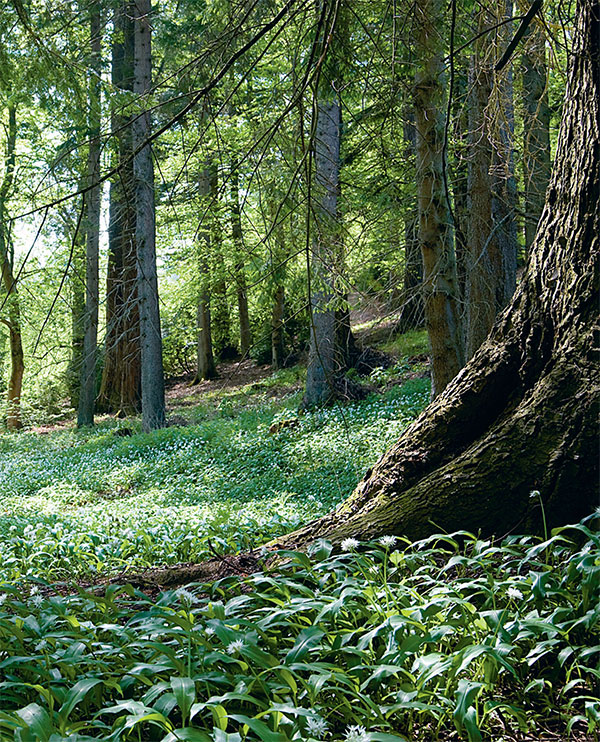
A springtime carpet of wild garlic (also known as ramps or ramsons).
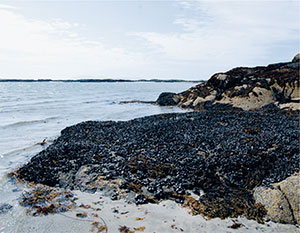
One of my local beaches yields a fine crop of mussels.
Over the years, Ive learnt that the maxim small is beautiful is definitely good for the forager. On a practical level, 1 pint (600ml) cordial bottles defrost quickly if frozen and have less time to deteriorate on the fridge shelf. Less really is more: filling bottles or jars ad infinitum can become dull. Just a few handfuls of a foraged ingredient concentrate the attention more than armfuls, and cooking becomes more imaginative. Foraging to fill your pantry or store cupboard takes a long time, is a bit greedy, and raises the question of sustainability. So forage for your own pot, and not the neighborhoods.
Intensive farming, with its associated destruction of hedgerows by machinery, is distressing, not just because my basket takes longer to fill, but because the birds and the bees are losers too.
There are rules of the countryside to adhere to, and weathers to tolerate, but tenacity is the key, and like learning to ride a bicycle (a forager needs one with a basket), it becomes easier with the passing of time. Forage as you would cycle: safely, mindful of others, with respect for the laws of the land, and with one final maxim: if in doubt, leave it out.
A foraging cook will learn to know how much sugar to add to blossom syrup, and when a flower has enough coats of egg wash, or syrup to crystallize. For some things there is a wee bit of trial and error. With growing confidence, you may prefer to make a more concentrated syrup than for a traditional cordial, and then dilute it further on use. It will certainly take up less storage space.

